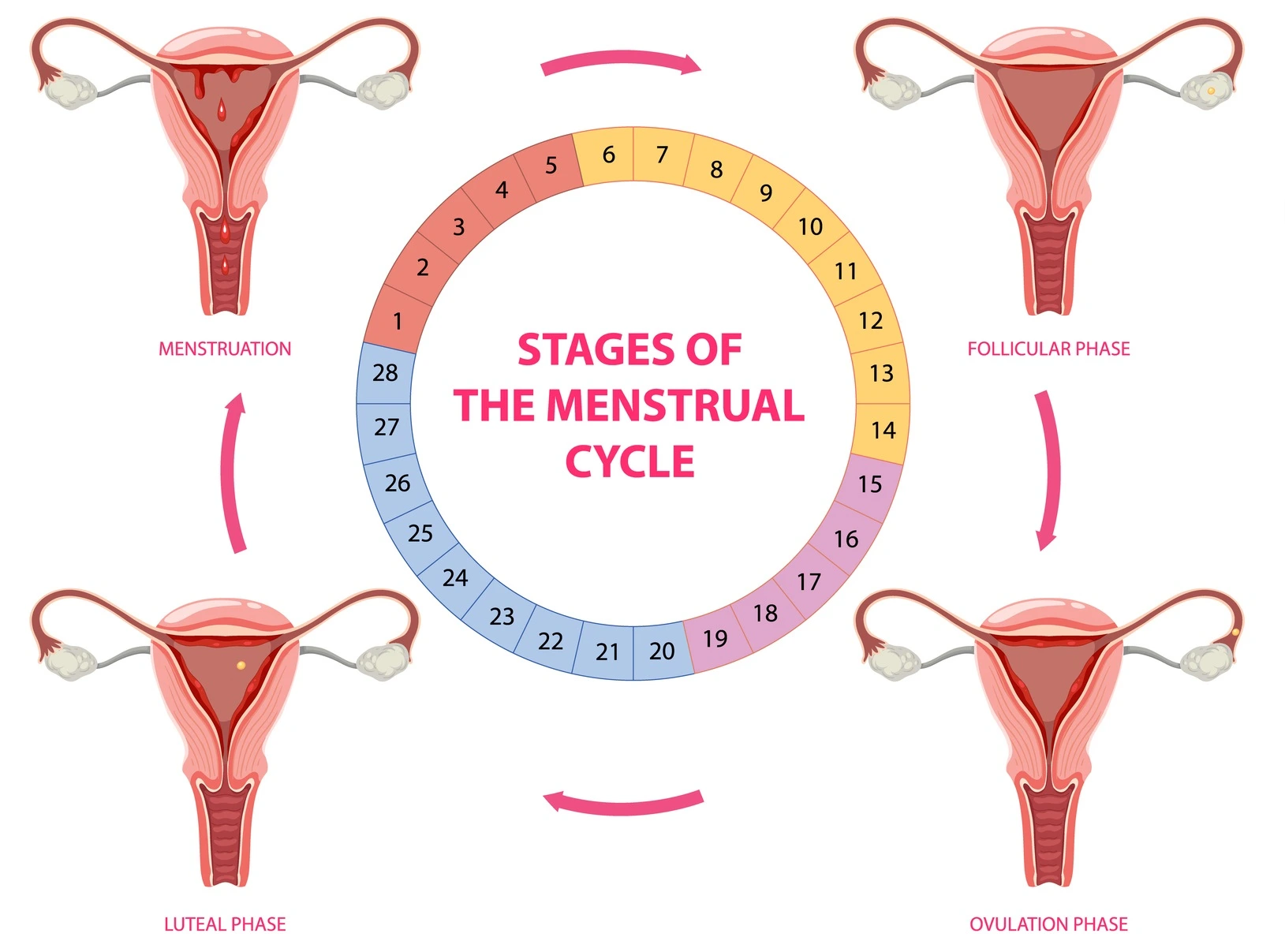Topics
What is a menstrual cycle?
The menstrual cycle is a natural process that occurs in the female reproductive system, typically lasting about 28 days, although it can vary from person to person. It involves a series of hormonal changes and physiological events that prepare the body for pregnancy.
What are the phases of the menstrual cycle?
There are a few phases of the menstrual cycle that you should take note of. This breakdown makes it easier for you to keep track and calculate the days of your menstrual cycle.

Menstruation
This is when menstruation occurs. The lining of the uterus, which has thickened in preparation for a potential pregnancy, is shed because fertilisation did not occur during the previous cycle. This phase typically lasts around 3-7 days.
Follicular Phase
This phase begins on the first day of menstruation. Hormones like follicle-stimulating hormone (FSH) stimulate the ovaries to produce follicles, each containing an immature egg. These follicles release oestrogen, which thickens the uterine lining in preparation for pregnancy.
Ovulation
Around the middle of the cycle, usually around day 14 in a 28-day cycle, one mature egg is released from one of the ovaries. This is triggered by a surge in luteinising hormone (LH). Ovulation is the peak of fertility in the menstrual cycle, and it is during this time when conception is most likely to occur.
Luteal Phase
After ovulation, the ruptured follicle transforms into a structure called the corpus luteum, which releases progesterone. Progesterone helps to maintain the thickened uterine lining, preparing it for potential implantation of a fertilised egg. If fertilisation does not occur, the corpus luteum breaks down, progesterone levels drop, and the menstrual cycle starts again with menstruation.
How many days does a typical or normal menstrual cycle last?
The menstrual cycle prepares every woman for the possibility of pregnancy each month. The length of each woman’s menstrual cycle varies, but the process is generally the same. It is important to monitor your menstrual cycles monthly to ensure everything is normal.
28 days is the average length of a normal menstrual cycle. However, it is still normal for a cycle to range in length from 24 days to about 38 days.
How to calculate a normal menstrual cycle?
Being aware of your menstrual cycle can be helpful to you on a few occasions. It is helpful if you have any significant life events or even vacations you are planning.
This is a simple step-by-step guide on how to track your menstrual cycle:
- Use an X to mark the first day of your period on your calendar.
- Continue using an X to mark each day you menstruate. When the bleeding stops, stop marking your calendar.
- When you start bleeding again, mark it with an X and consider this the first day of your period.
- First, count the number of days between each month’s first X to confirm the length of your menstrual cycle. Then, count the number of Xs to determine how many days the bleeding persists.
Some apps can help you track your menstrual cycle which you can download on your phone or tablet.
What is premenstrual syndrome?
Premenstrual syndrome, commonly known as PMS, is a collection of physical and emotional symptoms that most women experience in the days leading up to menstruation.
These symptoms can vary widely and may include mood swings, irritability, bloating, breast tenderness, fatigue, and changes in appetite. While the exact cause of PMS is not fully understood, hormonal fluctuations during the menstrual cycle are believed to play a significant role.
Management strategies include:
- Over-the-counter pain relievers like ibuprofen or paracetamol to relieve cramps, headaches, backaches, and breast tenderness.
- Exercising regularly.
- Getting sufficient rest.
- Healthy diet.
Read more: Menstrual Irregularities: Management and Treatment Options
Make an appointment at Pantai Hospitals
Understanding the menstrual cycle enables you to recognise and address irregular periods and their symptoms. Learn to monitor your menstrual cycle and pay attention to any sudden changes that may cause discomfort during your period.
If you notice any abnormalities during your menstrual cycle, it is essential to make note of them before consulting your doctor. Remember, most instances of irregular periods can be effectively treated.
Get in touch with us to book an appointment with our team of gynaecologists today, or find out more about our Obstetrics and Gynaecology Services at your nearest Pantai Hospital.
Pantai Hospitals have been accredited by the Malaysian Society for Quality in Health (MSQH) for its commitment to patient safety and service quality.












